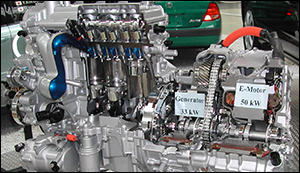Getting More Miles From Plug-in Hybrids
17. 2. 2016 | University of California | ucrtoday.ucr.edu
Plug-in hybrid electric vehicles (PHEVs) can reduce fuel consumption and greenhouse gas emissions compared to their gas-only counterparts. Researchers at the University of California, Riverside’s Bourns College of Engineering have taken the technology one step further, demonstrating how to improve the efficiency of current PHEVs by almost 12 percent.
Since plug-in hybrids combine gas or diesel engines with electric motors and large rechargeable batteries, a key component is an energy management system (EMS) that controls when they switch from ‘all-electric’ mode, during which stored energy from their batteries is used, to ‘hybrid’ mode, which utilizes both fuel and electricity. As new EMS devices are developed, an important consideration is combining the power streams from both sources in the most energy-efficient way.

While the UCR EMS does require trip-related information, it also gathers data in real time using onboard sensors and communications devices, rather than demanding it upfront. It is one of the first systems based on a machine learning technique called reinforcement learning (RL).
In comparison-based tests on a 20-mile commute in Southern California, the UCR EMS outperformed currently available binary mode systems, with average fuel savings of 11.9 percent. Even better, the system gets smarter the more it’s used and is not model- or driver-specific, meaning it can be applied to any PHEV driven by any individual.
Read more at University of California
Image Credit: Wikipedia
-jk-




